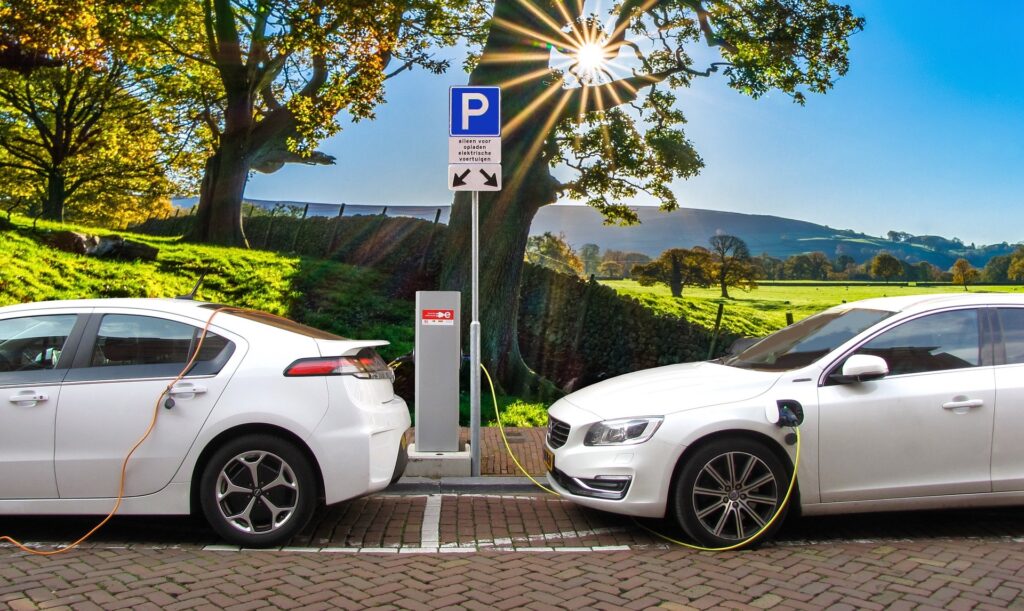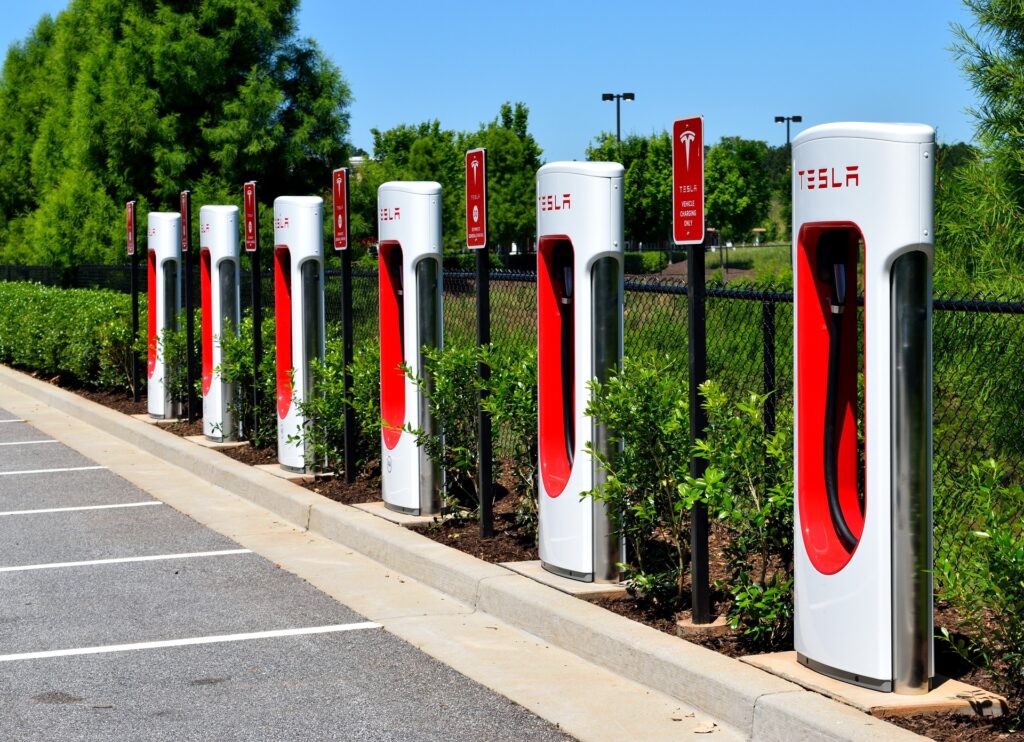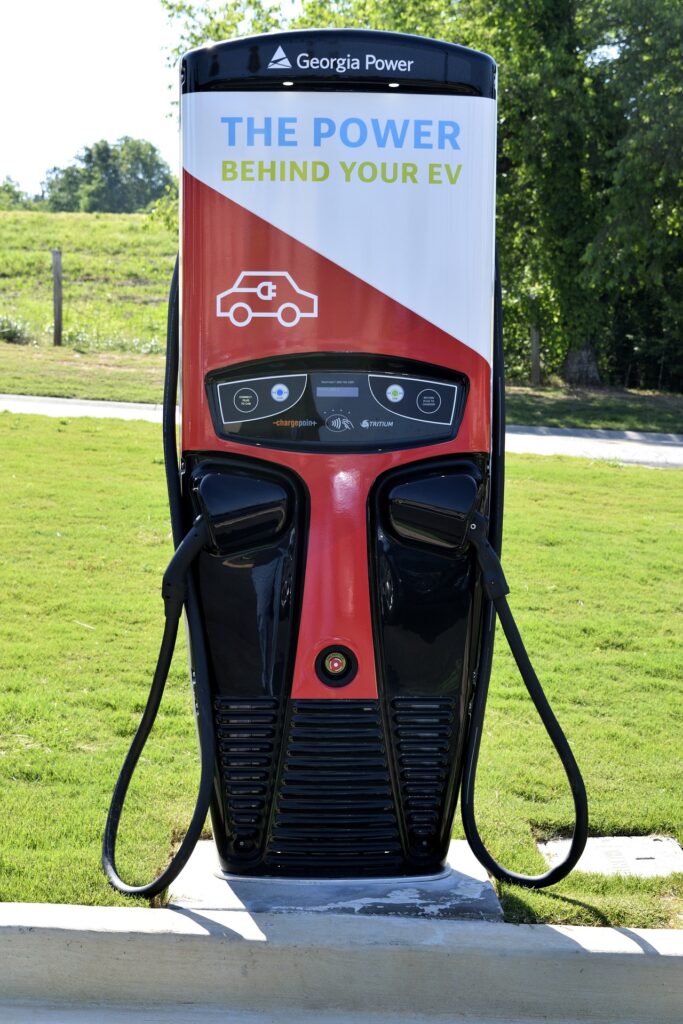Introduction
Greetings to the environmental pioneers of the modern age! As the world stands on the cusp of a sustainable revolution, the wonders of solar power are gaining traction. You might have enjoyed the advantages of solar energy in powering homes and gadgets, but have you ever entertained the exciting idea of using this abundant and clean energy source to charge your electric car?
If you’ve ever pictured your car silently and efficiently sipping on sunshine, or if this concept is entirely new to you, let’s embark on this enlightening journey together. In this comprehensive guide, we’ll explore the intersection of clean mobility and renewable energy, ensuring you are equipped with the knowledge and insights to ride the wave of green innovation.
Charge Your Electric Car: Why It’s the Future
Dive into the Electric Vehicle Wave
The automobile world is undergoing a transformation, unlike anything it’s seen since the days of Henry Ford. Electric Vehicles (EVs) are rapidly moving from the fringes to the forefront, heralding a seismic shift in how we perceive and use personal transport.
Let’s consider some statistics: global EV sales are skyrocketing, and projections suggest that by the end of this decade, EVs could account for a significant portion of all new car sales. But what’s driving this surge?
- Environmental Concerns: Traditional gasoline and diesel-powered vehicles are significant contributors to global greenhouse gas emissions. EVs, on the other hand, produce zero tailpipe emissions, presenting an eco-friendly alternative.
- Technological Advancements: With continuous improvements in battery technology, EVs are achieving longer ranges, faster charging times, and dropping costs, making them more accessible and appealing to the general public.
- Government Incentives: Recognizing the environmental benefits, governments worldwide are pushing the EV agenda with tax rebates, grants, and even plans to phase out combustion-engine vehicles in the coming decades.
Why Pairing Solar Energy with EVs Makes Perfect Sense
While EVs are a monumental leap towards sustainable transportation, their green credentials can be further amplified when powered by renewable energy sources, primarily solar energy. Here’s why:
- Reduction of carbon Footprint: When you charge your electric car with electricity from the grid, the greenness of that energy depends on how the power was generated. Solar charging ensures your vehicle is running on 100% clean energy.
- Economic Benefits: After the initial investment in solar infrastructure, the cost of “refueling” your car can be negligible. Sunshine, after all, doesn’t come with a price tag.
- Grid Independence: Solar charging stations, especially those equipped with energy storage solutions, can operate independently of the main power grid. This independence means fewer brownouts and more consistent charging, regardless of grid health.
- Resilient and Renewable: Unlike fossil fuels, which are finite, the sun is a perennial source of energy. This unlimited power supply is not only sustainable but also reliable, ensuring that the solar-EV combo remains effective for decades to come.
How to Charge Your Electric Car Using Solar Panels
Harnessing the power of the sun to charge your electric car seems like something out of a futuristic novel. However, with the advances in both solar and EV technology, this has become an achievable reality for many homeowners and businesses. Here’s a step-by-step breakdown of how this green synergy works:
1. Understand the Basics of Solar Energy
At the heart of every solar system are photovoltaic (PV) cells. These cells are designed to capture sunlight and convert it into electricity. When sunlight hits these cells, a reaction occurs, creating an electric current. This electricity, when collected and processed, is what will eventually feed your electric car.
2. Calculate Your EV’s Energy Needs
Before setting up a solar system to charge your electric car, you must understand how much energy your vehicle consumes. Most electric cars will specify energy consumption in kWh per 100 miles. For instance, if your car consumes 30 kWh for every 100 miles and you drive about 1,000 miles a month, your monthly energy need from solar would be 300 kWh.
3. Determine the Size of Your Solar Panel System
Once you’ve established your car’s energy needs, you can calculate the size of the solar installation required. The size is largely influenced by your geographical location and its average solar insolation. For instance, if your region gets an average of 5 hours of peak sunlight daily, and you need 300 kWh monthly, you’d require a solar setup of approximately 2 kW capacity.
4. Install the Necessary Equipment
- Solar Panels: These will capture the sunlight. Their efficiency and placement will play a crucial role in the amount of energy generated.
- Inverters: Solar panels produce direct current (DC), but your car and the grid often run on alternating current (AC). An inverter converts the energy from DC to AC.
- Solar Battery Storage (optional but recommended): Storing excess energy in batteries can ensure you have power to charge your electric car even when the sun isn’t shining, such as during nighttime or on cloudy days.
- EV Charging Station: This connects your car to the solar power system and facilitates efficient charging.
5. Maintain Your System for Optimal Efficiency
Like any technology, solar systems need maintenance. Ensure the panels are kept clean and free from obstructions like leaves or bird droppings. A routine inspection by a professional can also help in identifying any potential issues before they escalate.
6. Enjoy the Perks of Solar-Powered Driving
With the system in place, you can now experience the joy of driving an electric vehicle powered by the most sustainable energy source available — the sun. Every mile you drive reduces your carbon footprint and brings us a step closer to a cleaner planet.
Charging your electric car using solar panels is more than just a sustainable choice. It’s a testament to human innovation and our ability to harness nature’s resources for progress. If you’re at the intersection of solar energy and electric mobility, you’re not just driving into a greener future; you’re pioneering it.
Setting Up a Solar Station to Charge Your Electric Car
Setting up a dedicated solar station to power your electric vehicle offers a tantalizing proposition of green mobility. While the idea is highly sustainable, its execution requires meticulous planning, understanding of components, and an insight into optimizing the system for maximum efficiency. Here’s a comprehensive guide to help you navigate this eco-friendly endeavor:
1. Assessing Your Charging Needs
Before anything else, it’s paramount to understand the energy demands of your vehicle. Factor in your daily commute, potential long drives, and any other regular trips. This will give you an idea of the daily and monthly energy consumption of your EV and will act as the foundation for the size and capacity of your solar station.
2. Choosing the Right Equipment
a. Solar Panels: Modern solar panels come in various types – monocrystalline, polycrystalline, and thin-film, each with its advantages and efficiencies. Your choice will depend on your budget, available space, and desired efficiency.
b. Inverters: They play a pivotal role in converting the DC generated by solar panels to AC, which can be utilized for charging. There are two main types – string inverters and microinverters. The latter allows individual panel monitoring, ensuring optimal performance.
c. Solar Battery Storage: This isn’t mandatory but highly recommended, especially if you plan to charge your vehicle during non-peak sun hours. Leading brands like Tesla’s Powerwall or LG’s Chem Resu offer efficient energy storage solutions.
d. EV Charging Station or Electric Vehicle Supply Equipment (EVSE): Depending on your vehicle, you might need a Level 1 or Level 2 charger. While Level 1 chargers can be plugged into standard outlets, Level 2 chargers are faster and might require a dedicated circuit.
3. Installation Tips for Maximum Efficiency
a. Spotting the Perfect Location: It’s essential to ensure your panels receive unobstructed sunlight for most of the day. For most regions in the Northern Hemisphere, south-facing installations are ideal.
b. Professional Insights: While DIY solar installations are feasible, professional installers bring expertise that can optimize system efficiency, ensure safety standards, and potentially increase the lifespan of your setup.
c. Angle and Tilt: Depending on your latitude, the angle at which the solar panels are tilted can greatly influence their efficiency. An adjustable mount can be beneficial to change the tilt seasonally.
4. Budgeting and Costs
a. Upfront Costs: While the initial investment for solar panels, inverters, and storage can be significant, it’s essential to view it as a long-term investment that offers returns in the form of savings.
b. Potential Savings: Utilizing solar energy to charge your electric car can lead to significant monthly savings, especially when compared to grid electricity or gasoline costs.
c. Incentives and Rebates: Many regions offer tax credits, rebates, and incentives for both solar installations and EV purchases. Such benefits can substantially offset the setup costs.
5. Monitoring and Maintenance
Once your solar station is up and running, it’s crucial to monitor its performance. Modern systems come with software that allows real-time tracking of energy generation and consumption. Periodic cleaning of panels and routine checks can ensure your station operates at peak efficiency.
Remember, setting up a solar station to charge your electric car is a merger of two powerful green technologies. While the process may seem daunting initially, the long-term benefits, both to your wallet and the planet, make it an investment worth considering.
Myths Busted: Charge Your Electric Car Without the Misconceptions
The fusion of electric vehicles (EVs) and solar energy represents one of the most promising advancements in sustainable transportation. Yet, as with any emerging technology, misconceptions abound. Let’s debunk some of the most persistent myths:
1. Myth: Solar Panels Have a Short Lifespan
Truth: While technology from decades ago might not have lasted as long, today’s solar panels are designed to endure. Most modern panels have a warranty for 25 to 30 years, but they often last even longer. Their efficiency might decrease marginally over the years, usually losing about 0.5% of their efficiency annually, which means even after 25 years, they could still be operating at around 87.5% of their original capacity.
2. Myth: Charging EVs with Solar Energy is More Expensive than Using the Grid
Truth: While the initial setup cost for a solar charging system can be substantial, the long-term savings are considerable. Solar energy can essentially allow you to charge your vehicle for free (minus maintenance costs) after the initial return on investment. Additionally, with rising electricity prices and the decreasing cost of solar installations, solar charging can often be more economical in the long run.
3. Myth: Solar Charging is Only Feasible in Sunny Regions
Truth: Solar panels don’t necessarily require the blazing sun to generate electricity. Even in overcast conditions, solar panels can produce a significant amount of power. While sunnier regions will undoubtedly harvest more energy, many “cloudy” areas globally, like parts of Germany or the Pacific Northwest in the U.S., have thriving solar industries.
4. Myth: EV Solar Charging Stations Require Vast Amounts of Space
Truth: The efficiency and capacity of solar panels have improved dramatically. A standard home setup to power an EV usually doesn’t require an inordinate amount of space. For most vehicles, a few well-placed panels can produce the necessary energy for daily commuting.
5. Myth: Solar Panels and EVs Aren’t Truly “Green” Due to Battery Production
Truth: While it’s accurate that battery production for both solar storage and EVs has environmental impacts, it’s essential to look at the bigger picture. Over the life of an EV and a solar panel, the environmental benefits, in terms of reduced emissions and decreased fossil fuel consumption, far outweigh the initial production impacts. Plus, advancements in recycling technologies are making it increasingly feasible to reclaim and reuse materials from old batteries.
6. Myth: Solar Charging is Inefficient Compared to Grid Charging
Truth: With the proper setup, including efficient solar panels and optimal placement, solar charging can be remarkably efficient. While it’s true that charging directly from a high-powered grid connection might be faster, solar charging offers an unparalleled blend of sustainability and independence from utility providers.
In the age of information, it’s crucial to differentiate between fact and fiction, especially when it concerns our planet’s future. Charging your electric car using solar energy isn’t just feasible; it’s a step forward in the movement towards sustainable living and transportation.
Maintenance Tips to Efficiently Charge Your Electric Car with Solar Panels
Solar panels are a long-term investment, and like any other investment, a bit of care can go a long way. If you want to utilize the sun’s energy to its maximum potential to charge your electric car, you need to ensure that your solar setup is well-maintained.
1. Keep ‘Em Clean and Running
Dirt, Dust, and Debris: Over time, dirt, pollen, and even bird droppings can accumulate on your solar panels. While rain can wash away some of this debris, it’s not always sufficient.
Maintenance Tip: Periodically inspect your solar panels for any visible layers of dust or dirt. If they appear dirty, they can be cleaned using water with a soft brush or a squeegee. Remember not to use abrasive materials, as this can scratch and damage the panels. For safety, always ensure you have the proper equipment and precautionary measures in place if you need to climb onto your roof.
2. The Right Angle: Positioning for Optimal Sunlight
Shifting Sun: As seasons change, the sun’s angle and trajectory will alter. This can influence the efficiency of your solar panels.
Maintenance Tip: If you have adjustable mounts, consider changing the tilt of your panels a few times a year to accommodate for the sun’s position. For fixed installations, ensure there’s no new shading (from growing trees or new constructions) that could obstruct the panels.
3. Check for Physical Damages
Wear and Tear: Solar panels are robust and built to withstand varying weather conditions. However, they aren’t invincible. Hail, falling branches, or even some fauna can potentially damage them.
Maintenance Tip: After heavy storms or intense weather events, give your panels a visual inspection for any signs of damage, like cracks or fractures. If you identify any physical harm, it’s essential to get a professional evaluation to prevent any inefficiencies or potential hazards.
4. Monitor System Performance
Efficiency Metrics: As technology advances, most modern solar systems come with monitoring software. This software can be invaluable for maintaining optimal performance.
Maintenance Tip: Regularly check your system’s output. If there’s a sudden drop in energy production, it could indicate a malfunctioning panel, inverter issues, or other problems. Early detection can prevent prolonged inefficiencies and potential escalation of issues.

5. Inverter and Battery Care
Heart of the System: While panels grab the limelight, inverters play an equally vital role, in converting sunlight into usable power for your vehicle. Additionally, if you use batteries for storage, they also require attention.
Maintenance Tip: Listen for unusual noises from the inverter, and keep an eye on its display. Any anomalies might signal a need for maintenance or replacement. For batteries, ensure they are kept at optimal temperatures and regularly check for any signs of wear, corrosion, or leakage.
6. Professional Maintenance Check
Expert Eye: While DIY maintenance covers a lot, having an expert inspect the system annually can make a difference.
Maintenance Tip: Schedule an annual or biennial check-up with a solar technician. They can catch and rectify issues you might miss, ensuring the longevity and peak performance of your solar setup.
Regular maintenance might seem tedious, but it’s a minor effort when you weigh it against the benefits. With your panels in top condition, every sunny day will efficiently charge your electric car, ensuring a seamless, green drive.
The Positive Environmental Impact of Using Solar to Charge Your Electric Car
Harnessing the power of the sun to charge your electric car isn’t just a nod to technology’s advancements; it’s a significant stride toward a greener planet. Let’s break down the positive environmental contributions:
1. Significant Reduction in Greenhouse Gas Emissions
Traditional Cars vs. EVs: Traditional internal combustion engine (ICE) vehicles emit a substantial amount of greenhouse gases, especially CO2, contributing to global warming. On the other hand, EVs produce zero tailpipe emissions. However, if EVs draw power from coal-driven power plants, they still indirectly produce greenhouse gases.
Solar Solution: Charging your electric car with solar energy effectively breaks this chain. Solar panels produce clean, green energy, leading to genuinely zero-emission driving when paired with an EV.

2. Decreasing Air Pollution
Beyond Carbon: While CO2 often takes the spotlight, ICE vehicles also emit harmful pollutants like nitrogen oxides and particulate matter. Such pollutants can harm human health and ecosystems.
Cleaner Air with Solar and EVs: With solar-charged EVs, we not only address the carbon problem but also significantly reduce harmful pollutants, ensuring cleaner air and healthier communities.
3. Conserving Water Resources
Water and Energy Production: Traditional energy generation methods, especially coal, natural gas, and nuclear power plants, use vast amounts of water for cooling. Water is a precious resource, and its extensive use for energy production can strain local ecosystems and communities.
Solar’s Minimal Water Footprint: Solar photovoltaic (PV) panels require a minuscule amount of water compared to these conventional methods. By charging your EV through solar, you’re indirectly conserving significant water resources.
4. Reducing Energy Dependency
Local Energy Production: Solar panels allow for decentralized energy production. Instead of relying on massive power plants that may source energy from non-renewable resources, you produce your power right at home.
Green Independence: By charging your electric car with your solar panels, you’re moving away from non-renewable, often imported energy sources. This shift not only reduces environmental impacts but also boosts local economies and energy security.
5. Sustainable Energy Production
Limitless Solar: The sun showers our planet with abundant energy daily. Unlike finite fossil fuels, we won’t run out of solar power for billions of years.
Harnessing Sustainability: By choosing solar energy to charge your electric car, you’re tapping into one of the most sustainable energy sources available. This choice ensures that future generations will also have access to clean energy and transportation.
6. Encouraging Green Innovation
Leading by Example: Early adopters of solar-charging solutions for EVs set a precedent. Their commitment to green technology can drive neighbors, communities, and even entire cities to explore and invest in sustainable solutions.
Boosting Green Economies: As more people adopt solar to charge electric cars, demand can spur further research and innovation. This increased demand can lead to job creation in the green sector, better technology, and more affordable solutions in the future.
Charging your electric car with solar energy is more than just a personal eco-friendly choice; it’s a contribution to a global environmental movement. Every ray of sunlight captured and every mile driven on clean energy brings us a step closer to a sustainable and harmonious future.

Personal Insights: My Journey Charging My Electric Car with Sunshine!
The first time I contemplated the idea of solar energy, it was more out of curiosity than anything else. Everywhere I looked, the world seemed to be tilting toward sustainability. The more I delved into it, the more I became enamored with the very notion of drawing power from nature, specifically from the sun, the oldest energy source known to our world.
The Inception: A Trip to the Countryside
It all began during a weekend trip to the countryside. Nestled among the rolling green hills and sparkling streams, I chanced upon a cottage that boasted a canopy of gleaming solar panels. The owner, an affable gentleman named Ted, spoke animatedly about his setup. He painted a picture of energy independence, of a life unburdened by electricity bills, and of the simple joy of harnessing sunlight.
Taking the Plunge: Setting up My Solar Panels
Inspired, I returned to the urban sprawl and began my research. Within months, I had my solar installation set up. It was a sight to behold, those panels lined neatly, reflecting the sun’s brilliance. But it wasn’t just about electricity for the home; my next goal was to use this energy to power my commute. Enter my electric car.
The Symbiosis: Car Meets Solar
The day I brought my electric car home was, in many ways, transformative. As I connected it to the solar-powered charger, I felt a palpable synergy. It was like two pieces of a puzzle clicking into place. And soon, the ritual became almost sacred: Wake up, witness the sun rise, and let my car drink in the golden rays through those panels.
Nature’s Embrace: More Than Just a Charge
Beyond the obvious environmental and economic benefits, there was something profoundly spiritual about the whole process. Each morning, as I sipped my coffee, I’d glance out to see the sunlight dappling the leaves, listen to the birds commence their dawn chorus, and watch as my car absorbed this ambient energy. This daily ritual wasn’t just about charging a car; it was an affirmation of my connection to the larger cosmos.
The most surprising outcome was the community’s response. Neighbors grew curious. Friends dropped by to marvel at the setup. Little kids would point and ask questions, their innocent faces shining with intrigue. My home became an unintentional beacon for renewable energy, and I found myself immersed in enlightening conversations about sustainability.
Today: Beyond Just a Mode of Transport
Now, when I drive, I feel the wind and sun in a way I never did before. Each journey isn’t just from point A to B; it’s a testament to human ingenuity and nature’s generosity combined. There’s a silent thank you in my heart, not just for the saved dollars or reduced carbon emissions, but for the undeniable bond I now feel with the environment.
Charging my electric car with sunshine isn’t just a technological marvel; it’s a lifestyle, a statement, and above all, an ode to nature. Through this journey, I’ve come to realize that the most profound connections aren’t always the ones we can see or touch. Sometimes, they’re the ones we feel every time we harness the sun’s power and take to the road.
Wrap-Up: The Bright Road Ahead for Solar and EVs
As we journey further into the 21st century, the quest to charge your electric car using clean and renewable means takes center stage. Solar energy and electric vehicles (EVs) are more than just innovations; they’re clear signals of a world transitioning to sustainable mobility. The horizon promises technological advancements that, while they might seem straight out of a sci-fi narrative now, are steadily moving toward reality.
1. Advanced Battery Technologies for Extended Ranges
One of the current challenges when you charge your electric car is ensuring a long enough range. Advanced research into battery tech, from solid-state to lithium-air batteries, could soon make this concern obsolete. The potential? A future where charging your electric car takes mere minutes and offers a driving range that rivals or exceeds traditional fuel vehicles.
2. Solar Integration Directly on Your EV
Beyond just stations to charge your electric car, imagine a world where the vehicle itself is a solar powerhouse. Innovations like solar bodywork, flexible solar films, and sunroofs could offer auxiliary power, cutting down the frequency with which you need to charge your electric car and even extending the range between charges.
3. Self-Driving Electric Cars and Their Revolutionary Potential
As we move to a future where you can charge your electric car using solar energy, another groundbreaking shift is towards autonomous, or self-driving, cars. Pioneers like Tesla and Waymo have showcased:
- Safety: Enhanced by a suite of sensors, these vehicles can often detect and avoid hazards more efficiently than human drivers.
- Efficiency: With the capability to communicate with other vehicles, self-driving EVs optimize road usage, ensuring you get the most out of each time you charge your electric car.
- Accessibility: Offering the promise of mobility even to those who can’t traditionally drive, making the entire process, including how often you charge your electric car, more efficient.
4. Vehicle-to-Grid (V2G) Systems and Charging Your Electric Car
A future where you charge your electric car and it gives back. V2G systems can enable EVs to return surplus energy, especially during peak solar generation, acting as mobile power storage units. This interaction can both stabilize our power grids and potentially offset the costs each time you charge your electric car.
5. Smart Cities: The Future of Charging Your Electric Car
Urban evolution could see cities that seamlessly integrate with the need to charge your electric car. Envision smart parking that charges your car while you’re busy, roads that offer wireless charging as you commute, and traffic systems designed to work with autonomous vehicles for fluid traffic flow.
6. Sustainability Beyond Just Charging Your Electric Car
The future might also see a greater emphasis on repurposing. Old EV batteries could be recycled into stationary storage units, and solar tech might become more recyclable, reinforcing the green credentials every time you charge your electric car.
Charge Your Electric Car: Conclusion
In wrapping up, as we transition away from fossil fuels, the emphasis to charge your electric car sustainably takes precedence. The union of solar and EVs, complemented by breakthroughs like autonomous vehicles, heralds a future that’s not just eco-friendly, but also teeming with innovation and potential. Charging your electric car might soon be an act that’s as revolutionary as it is routine.
FAQs
- What’s the setup cost to charge your electric car with solar panels? Prices may fluctuate based on several factors including your region, but a ballpark estimate is between $10,000 to $25,000.
- Is solar energy reliable for daily car charging? Absolutely! With an apt system in place and consistent sunlight, daily charging is not just feasible but efficient.
- How long does solar charging take for a full EV battery? Charging times depend on multiple factors. On average, it can range between 4 to 12 hours. This varies based on battery capacity, panel efficiency, and the amount of sunlight.
- Are there tax incentives for choosing solar? Yes, many governments encourage solar installations by offering tax breaks, rebates, or both. It’s always good to check with local or national agencies.
- Does producing solar panels have environmental impacts? Yes, the manufacturing process does have some environmental costs. However, the long-term benefits, in terms of reduced greenhouse gas emissions and decreased dependency on fossil fuels, outweigh the initial impacts.



